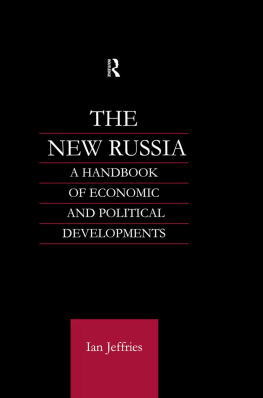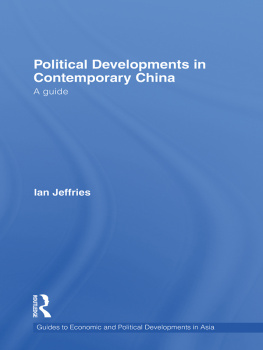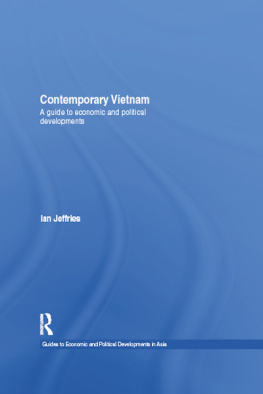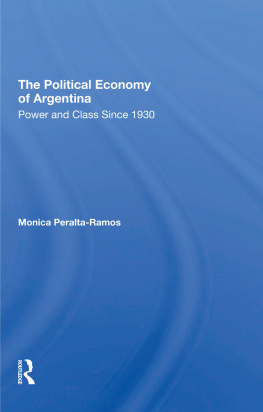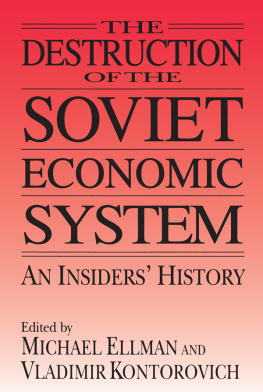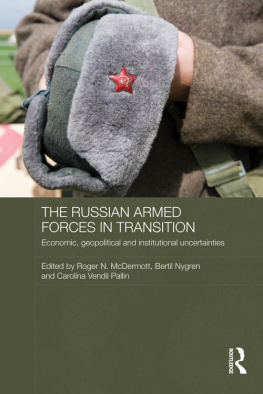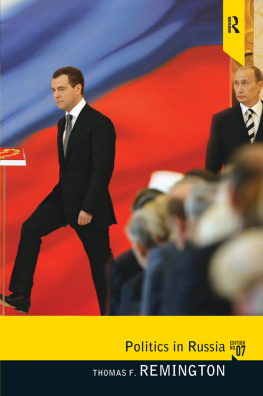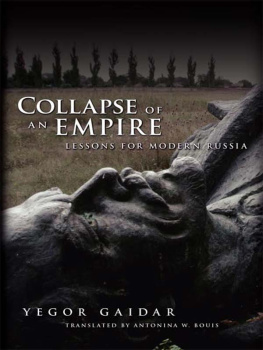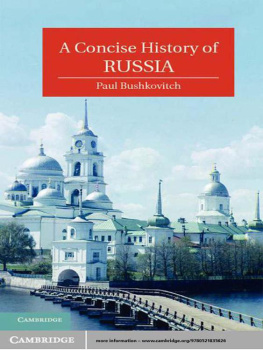The New Russia
The New Russia
A Handbook of Economic and Political Developments
Ian Jeffries
First Published 2002
by Routledge
Published 2013 by Routledge
2 Park Square, Milton Park, Abingdon, Oxon OX14 4RN
Simultaneously published in the USA and Canada
by Routledge
711 Third Avenue, New York, NY, 10017, USA
Routledge is an imprint of the Taylor & Francis Group, an informa business
2002 Ian Jeffries
All rights reserved. No part of this book may be reprinted or reproduced or utilised in any form or by any electronic, mechanical, or other means, now known or hereafter invented, including photocopying and recording, or in any information storage or retrieval system, without permission in writing from the publishers.
British Library Cataloguing in Publication Data
A catalogue record of this book is available from the British Library
Library of Congress Cataloguing in Publication Data
A catalogue record for this book has been requested
ISBN 13: 978-0-700-71621-0 (hbk)
CONTENTS
The Reelection of Yeltsin as President on 3 July 1996
The Merry-Go-Round of Prime Ministers
The General Election of 19 December 1999
The Resignation of Yeltsin on 31 December 1999 and the Meteoric Rise of Vladimir Putin from Relative Obscurity to President (elected 26 March 2000); the Putin Reforms
The Soviet Union: average annual rates of growth of NMP, GNP and GDP (%) |
Russia: the nominal value of the rouble on the Moscow Interbank Currency Exchange (no. of roubles to $1) |
Russia: privatization |
Russia: private farms |
Russia: selected economic indicators 19901999 |
Russia: monthly rate of inflation (%) |
Russia: unemployment |
Russia: the general election of 12 December 1993: the State Duma |
Russia: the general election of 17 December 1995: the State Duma |
The mammoth task of keeping up to date with rapidly changing economic and political events in Russia would not have been possible without the help of a magnificent library staff, certain other individuals and the portering/cleaning staff in general. Individuals deserving of particular mention are the following (in alphabetical order): Gwen Bailey (Library); Pam Beardsmore, Michele Davies (Library); Dianne Evans (Library); Ray Jones (Library); Nigel OLeary (Economics); Lis Parcell (Library); Ann Preece (Library); Paul Reynolds (Library); Kathy Sivertsen (Library); Clive Towse (Library); Ray Watts (Library); Chris West (Library).
The earliest possible access to quality newspapers and magazines has, as always, been ensured by the excellent Kays Newsagency, owned and managed by Russell Davies.
Professor Michael Kaser and Professor Paul Hare have continually provided external support and encouragement.
This is not (and is not meant to be) original research but a broad-brush painting of the overall economic and political picture. I make use of a range of secondary sources in English. Apart from journals and books, the sources include the following:
1. Reports such as the European Bank for Reconstruction and Developments (EBRDs) Transition Report, the United Nations World Economic and Social Survey, the United Nations Economic Commission for Europes Economic Survey of Europe, the United Nations Economic and Social Commission for Asia and the Pacifics Economic and Social Survey of Asia and the Pacific, the World Banks Transition, the IMFs World Economic Survey and the OECDs Economic Outlook.
2. Quality newspapers such as the International Herald Tribune (IHT), Financial Times (FT), The Times, The Guardian, The Independent, The Telegraph and The Baltic Times.
3. Weeklies such as The Economist and the Far Eastern Economic Review (PEER).
4. Quarterlies/Monthlies/Fortnightlies such as Russian Economic Trends, Business Central Europe, Eastern Europe (EEN, formerly Eastern Europe Newsletter), The World Today, Asian Survey, Current Digest of the Post-Soviet Press (CDSP, before 5 February 1992 known as Current Digest of the Soviet Press), Transition and Finance and Development.
A review in the Times Higher Education Supplement (29 October 1993) kindly referred to my meticulous referencing, even though detailed referencing has the potential to be tiresome to readers. But since this is not original research and I am deeply indebted to many sources, I feel it necessary to make every effort to acknowledge the material used. It is not always feasible to name the correspondents or contributors, but I try, as far as possible, to ensure that credit goes where it is due. Partly for this reason and partly for accuracy I make extensive use of quotations.
Ian Jeffries
Centre of Russian and East European Studies, University of Wales
INTRODUCTION
The Soviet Union was the worlds largest country in terms of land area, occupying a sixth of the earths land surface excluding Antarctica. Stalin and his successors succeeded in making the Soviet Union one of the worlds two superpowers in terms of conventional and nuclear military capacity. The USSR (Union of Soviet Socialist Republics) comprised fifteen republics (based on the most populous nationalities). In 1990 the population was 290.1 million, the third largest after China and India. Russia dwarfed the other Soviet republics, e.g. its population of 148.5 million in 1990 represented 51.2 per cent of the Soviet total. Russia may be still nearly twice the size of the United States, but it is a quarter smaller than the Soviet Union. Of its present territorial extent less than 10 per cent is arable The United States population of 264 million people is nearly 80 per cent larger than the 148 million population of todays Russia In the Soviet Union only 55 per cent of the people were ethnic Russians. In todays Russia that figure is 81.5 per cent, with less than 20 per cent of the population belonging to fourteen acknowledged minority nationalities. It has not been so homogeneous since the eighteenth century (William Pfaff, IHT, 22 April 1998, p. 9).
On the eve of the First World War Russia (an empire which, unlike the British Empire for example, was essentially in one piece) was still a relatively backward, agrarian country. But the economic potential in the shape of a rich and varied natural resource endowment was enormous, despite climatic, transport and soil difficulties. There was actually considerable industrial growth during thirty years prior to 1913, the level of output doubling during the 1890s for instance. In 1913 Russia accounted for only just over 4 per cent of world industrial output (compared with 10 per cent in 1941 and about 20 per cent in the mid-1980s). In 1917 Russia ranked as the fifth industrial power in the world and the fourth in Europe (Aganbegyan 1988b: 457). But per capita income in 1913 was less than 40 per cent of Frances, about 33 per cent of Germanys, 20 per cent of Britains and 10 per cent of the USAs (Gregory and Stuart 1990: 36). Agriculture employed 72 per cent of the workforce (82 per cent of the population was rural) and contributed over 50 per cent of national product (Gregory and Stuart 1990: 39). Serfdom had been abolished only in 1861 and the attempted switch to capitalist agriculture after 1906 came too late. The commodity structure of foreign trade was typical of a poor country, with exports of primary commodities, especially grain, paying for imports of manufactures, especially capital goods. A high birth rate of around forty-four per thousand in 1913 was coupled with a relatively high death rate of around twenty-seven per thousand, the infant mortality rate being about 237 per thousand. Sixty per cent of the population over the age of ten was illiterate (Gregory and Stuart 1990: 39).

